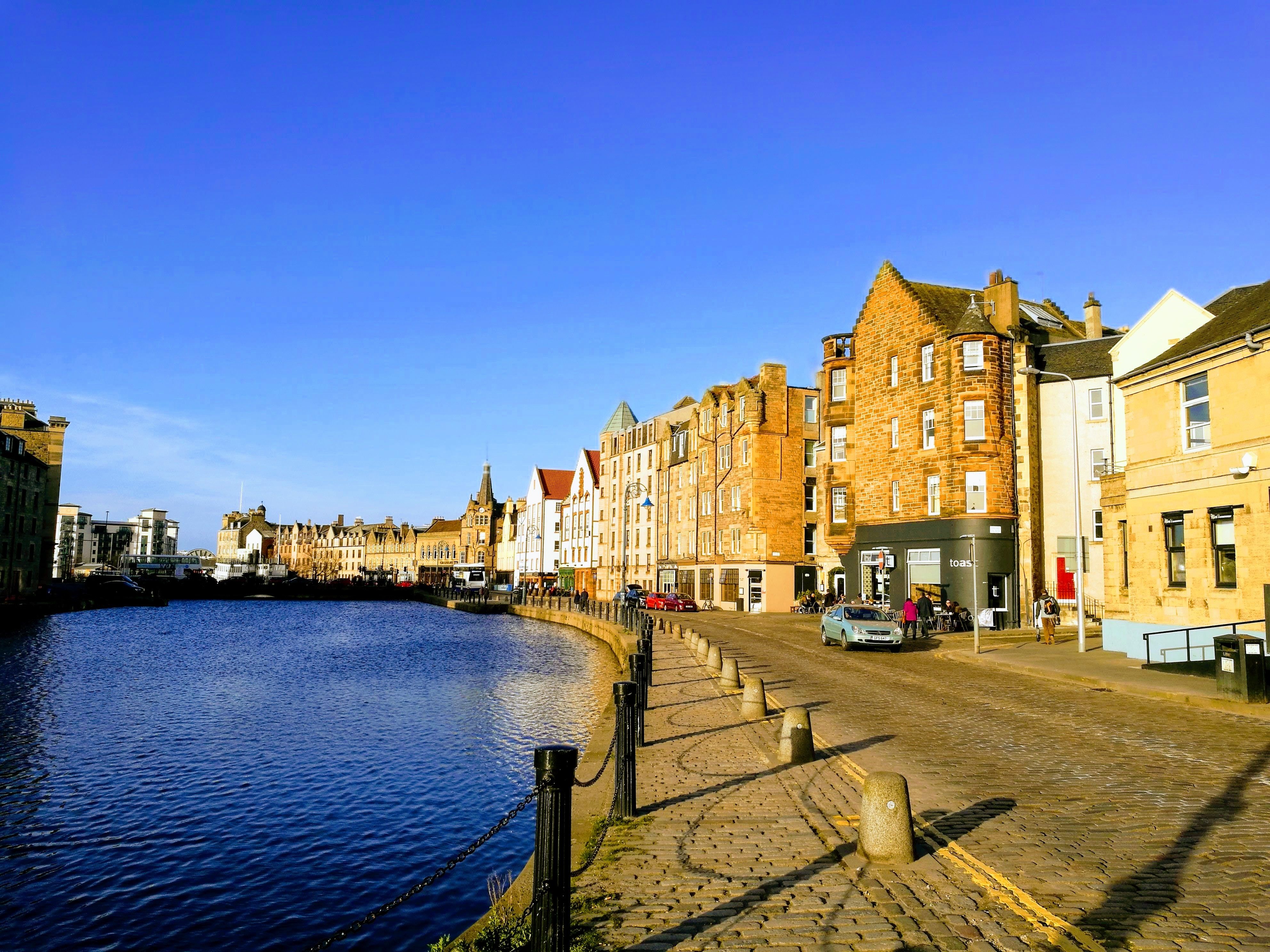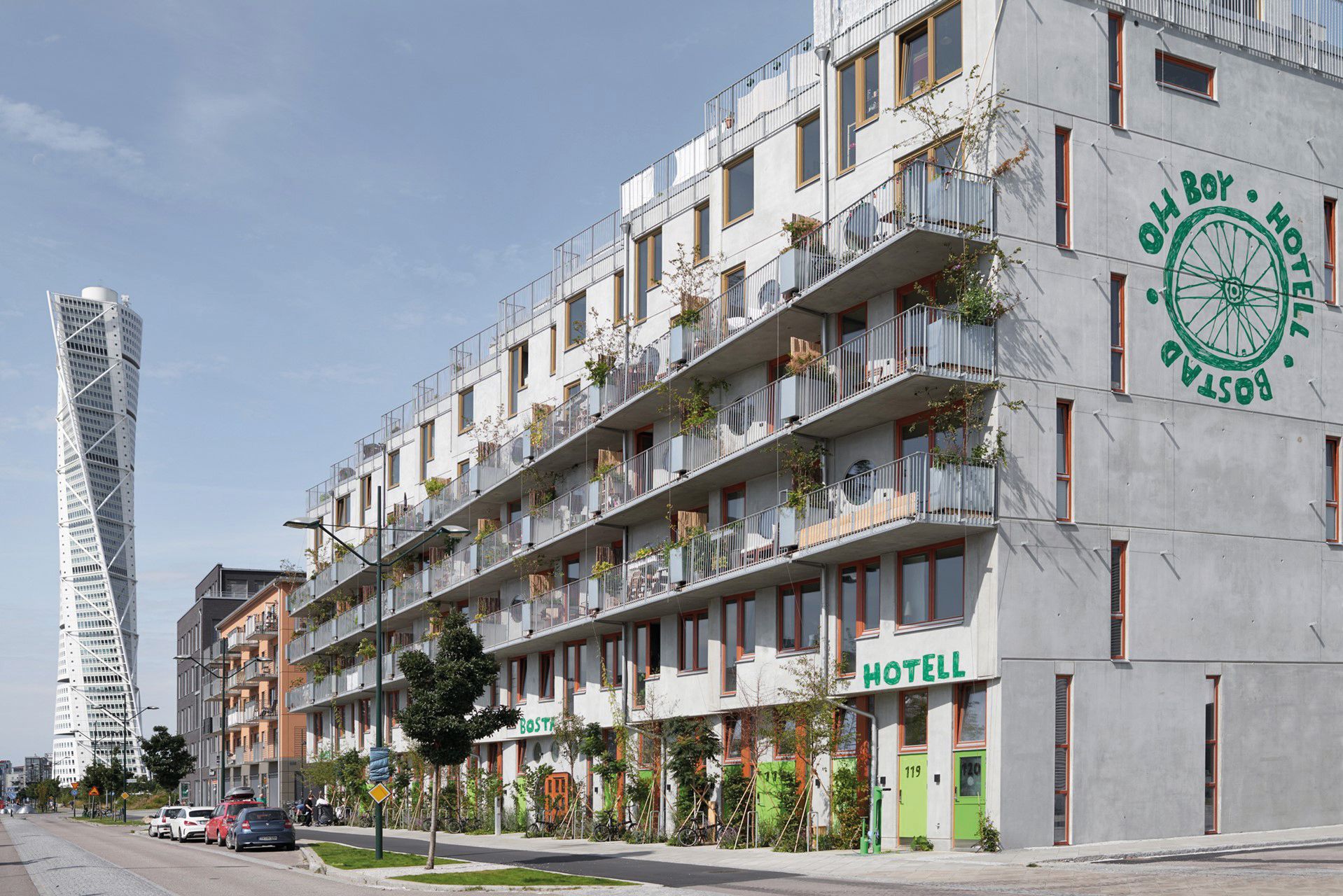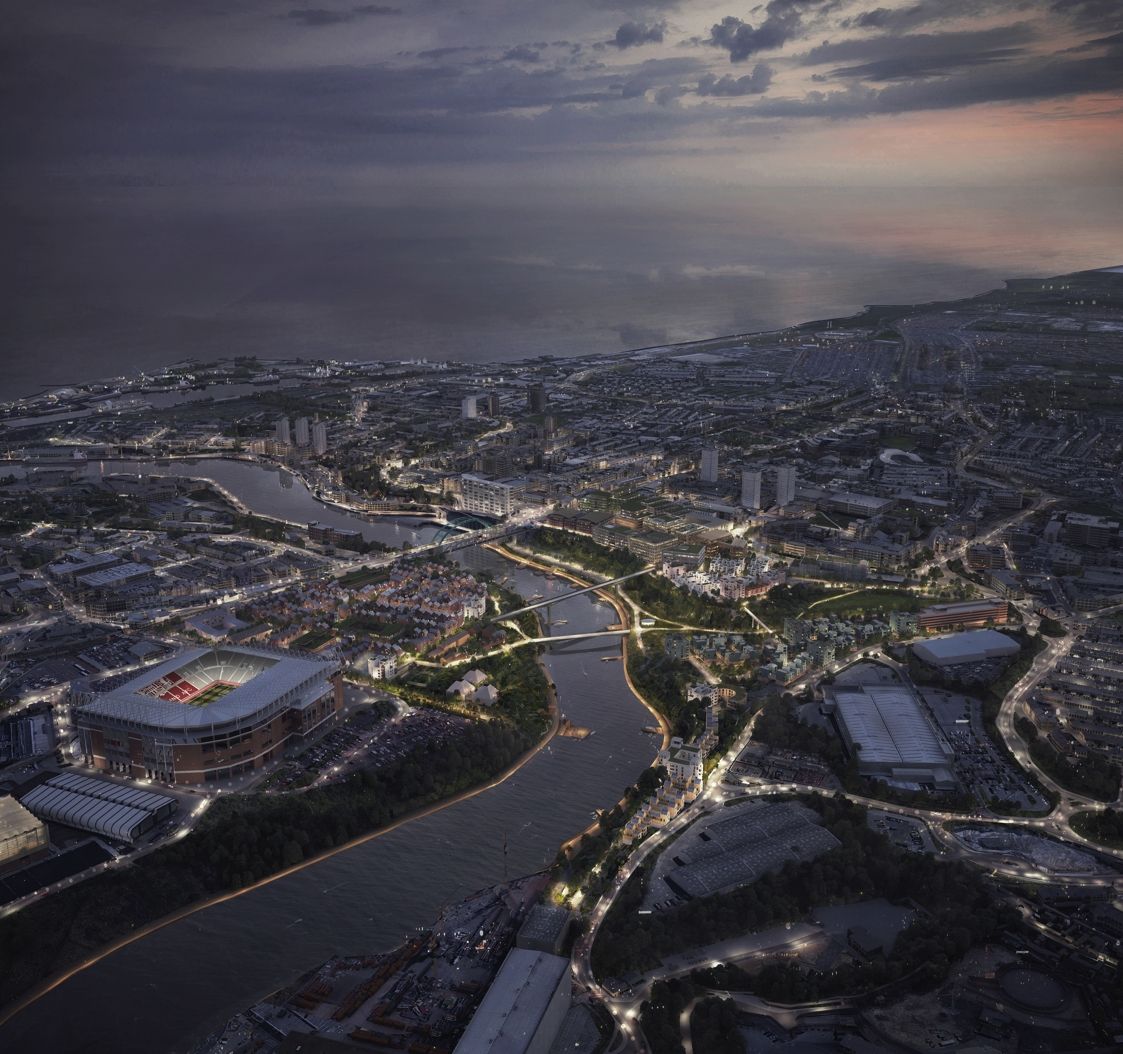Imagine this. You’re a once proudly independent town built on shipbuilding and industry, with bustling docks and handsome streets. But you lie just a few miles away from a grander, altogether more global city. After years in the doldrums, your neighbour has begun to bounce back, but you know it’s your time to shine.
Where do you go from here? Well, for once, we’re not talking about the Left Bank. But can lessons be learnt from other places around the globe who’ve faced similar kinks in the road to regeneration?
Leith clings to the shores of the Firth of Forth – its wharfs and warehouses lie just four miles from Edinburgh’s Royal Mile. Like the Left Bank, it too has been captured by the orbit of its larger neighbour, a once-independent borough, now incorporated into the city region.
But, less than 20 or so years ago, Edinburgh’s tartan-fringed Royal Mile hummed with tourists and traders, and felt a world away from the dilapidated stretch of coastline where Edinburgh’s northern fringes met the steely banks of the Forth.
If you want to know how Leith looked, back then, take a peek at the Proclaimers’ video for Letter From America (if, for nothing else, to remind you how great the song is). You’ll see boarded up tenements, rusting padlocks slung over dockyard gates and rutted, mud-splattered streets.
Visit the town now, and the scene is of buoyant optimism, fancy coffee shops (surely the canary in the coal mine for any successful turn around?) and confident new apartment blocks. Businesses too: startups, socially minded and serious incomers alike.
“Leith is becoming Edinburgh’s northern powerhouse,” Donald Anderson, former leader of Edinburgh City Council tells us.
“I remember when the streets of Leith were used as the location for Trainspotting,” he tells us, adding that the film’s sombre and gritty mood fitted the town perfectly.

Last year, Leith was named one of the most desirable places to live. But not in Scotland – in the whole of Britain. And the most amazing bit, Donald says, is that nobody laughed.
So what happened here? And are we headed in the same direction? Or will the Proclaimers be slipping into their threadbare Levi's to film their next single down on the pier at Rock Ferry?
The turning point, Donald tells us, came in the early '80s with the Leith Project, a campaign – as much to change perceptions as encourage investment – started by local councillor John Crichton.
“He was the driving force behind the scheme, which sought to tackle the severe unemployment Leith and the northern suburbs of Edinburgh were faced with,” Donald says.
Its mission was to get people to look again. To remind people Leith existed. And that, with the right mix of faith, subsidies and investment, the sun could shine on Leith again.
“There’s always been a distinct spirit and sense of community here,” Donald says. “It was close to Edinburgh but felt different, edgier, and younger. The important thing, for all of us, was that Leith never lost that. We didn’t want to be just another suburb of Edinburgh.”
Miraculously, while much has changed, Leith’s sense of identity hasn’t.
“John was a visionary – and a vision is what you need when you’re looking at a long game,” Donald says. “His enthusiasm and determination was picked up by the local authorities, the Scottish Enterprise for Economic Development and private investors.”
It was, in short, infectious. Looking back, Donald points to a few key decisions that made a huge impact to Leith’s success.

Connectivity
“The trams are coming this year,” Donald says, “and that’s a massive boost. You can’t underestimate the power of good solid public transport connections – and we’re already seeing investment come on the back of that.”
Good public transport – to all areas, and to the final, crucial mile: to houses and start-ups and attractions, is make or break. “There were plans to add the extension to the more affluent southern suburbs, but Leith put up a convincing argument that it needed them more.”
Collaboration
There’s been a mixture of investment here,” says Donald, pointing to the town’s mix of public and private investment. “But everyone worked together for the greater good.”
From housing associations to startups, entrepreneurs to artists, Leith’s benefitted from a joined-up, collegiate – not competitive – approach. “We’ve all wanted this to work,” Donald says. “There’s been no silo mentality.”
Brave thinking
“Leith Port Authority’s been very progressive,” Donald says. “And it’s encouraged like-minded people here. It’s easy to throw up identikit developments and sap the place of character.”
You need brave thinking, schemes that shake things up and attract attention. They crowd-sourced the building of a flagship new whisky distillery here, which is now a landmark visitor centre. Doing the easy thing, Donald says, was never an option.
Get others to believe in you
It’s all very well for locals to love their home. But others have to see its potential too. “When the Scottish Executive built its civil service headquarters down here, before regeneration had really got off the ground, that was a real statement of intent,” Donald says.
Soon after, the country’s tourist agency based itself here too. “A generation ago, that would have seemed impossible,” he says. Getting outsiders to see the potential you see, Donald believes, is priceless.

Encourage tourists
“It’s about giving people a reason to come, and to come back again,” Donald says of the town’s drive to increase visitor spend and overnight stays.
“Think about developing eye-catching events. Winter festivals help shops big and small: if they have a good Christmas it can power them through the lean months.” But none of this works without accommodation: “If you’ve no hotels, how can you make people stay?” he asks.
Creative hubs
The Shore area in Leith is rapidly emerging as Edinburgh city region’s creative hub. It’s where the Port of Leith Distillery is taking shape.
More creative industries are colonising the area too, such as video game production company Build A Rocket Boy (former team members from GTA’s RockStar North), while the huge former industrial dockside shed is the new home to Screen Scotland (a publicly funded body) as a permanent large-scale film and TV production facility.
Young people
“Young people always bought flats here, but that was more a case of them not being able to afford anywhere else,” Donald says. “Now there’s a real buzz and vibrancy to the area that’s missing in some parts of Edinburgh, helped by a very proactive housing association.”
Small businesses and artisan organisations see that, and want to be a part of it. “We’ve seen plenty of former heavy industrial sites converted into start-ups and bars. Brownfield development was always a priority.”
Don’t fear success
“There’s always a fear that people will be driven out,” Donald says, admitting that that has happened, a little, along the water’s edge. But there are still social housing requirements, and still cheaper rents here.
Ultimately, though, he’s sanguine about the spectre of gentrification. “The problems of success are always easier to deal with than the problems of failure. Gentrification isn’t something that keeps me up at night. If you saw where we came from, you’ll realise: this is exactly where we wanted to be.”
Malmö: Build a cluster

From edgy urban also-ran to cool and cutting edge competitor: how Malmö proved it wasn’t game over.
Not so long ago, Sweden’s third city, Malmö, was facing an uncertain future. Its once-busy harbours and heavy industry long dormant: its next role uncertain.
“The city moved to more of a knowledge region and it is still growing,” says Louise Mansson, of the city once considered a cultural backwater.
Project manager at Media Evolution, Louise points to how they too are well connected with larger neighbours, thanks to the Øresund bridge between Sweden and the rest of Europe.
“It takes only 20 minutes to get to Copenhagen,” Louise says. It means that a lot of people could come from Copenhagen to work in the city. But previously, the traffic was only flowing in the other direction.
Now, after a failed attempt to locate the country’s car industry here, the city’s pivoted from steel cars to pixelated ones.
The next phase was a comprehensive redevelopment of the shipyards, which are larger than Lairds. Voila – a mixed use development with an ‘iconic’ building, Turning Torso.
Soon, a new university (training educators), a branch of Stockholm’s Moderna Museet, and wind turbine manufacturing followed.
But it’s the town’s new role as a gaming centre that looks most promising. Malmö invested heavily in growing existing studios, luring new ones in, converting old buildings for studios and spreading the word.
Now it’s one of Europe’s biggest gaming centres. In their wake? Media companies, film, web, digital…
“We are still continuing the process because to move from heavy industry to knowledge base, is about starting to think in a new way,” Louise says. “This has been one of the hardest parts for Malmö: How can we change? What do we need to bring in to be able to continue, to get stronger...
"It is an old town. People have been living here for many years, so it takes time.” But sometimes you don’t have a choice. “Otherwise the South of Sweden would be dead.”
Some companies have even moved from Stockholm because, as Louise says, “Something exciting is happening here.”
Sunderland and Nantes

If you don’t have all the answers: ask. Sunderland leans in and learns from others.
Twinning with a European city doesn’t have to be an empty act of ceremonial civic posturing. The region of Nantes-Saint Nazaire – a former shipbuilding heartland on the river Loire – faced regeneration priorities of its own.
Its audacious repurposing of a dockland island into the home of the giants who marauded through Liverpool’s streets is one of the most impressive successful second acts in recent regeneration history.
Nantes kicked off its rebirth with a huge programme of cultural festivals in the 1980s. The big idea? To excite locals, entice media, and get people to take a closer look at the town’s abandoned industrial buildings.
Think about how the Liverpool Biennial started, then add a huge dollop of French savoir faire on top, and you’re close.
This led to a new cultural centre in a former biscuit factory and a permanent artist trail. Rather than just focusing on the ‘what’, Nantes invested in the ‘how’.
The region, always known for its industry and innovation, became a magnet for music and art production, not just tourism. The making of things became its unique calling card.
Trempolino, on the Îles de Nantes, is a centre for music making for the whole region: a thriving hub for musicians and related artists, supporting them and giving them space to rehearse, record and create new work.
This in turn has inspired independent venues around it. A thriving ecosystem where music is made and gigs are played.
Saint Nazaire, meanwhile, looked back to its roots too: its maritime roots. ‘Ville Port’ created a redesigned two-mile seafront promenade with walking-and biking- friendly amenities.

The town’s twin-city, Sunderland, hugs the northeast coast just south of buzzing-again Gateshead. Things are happening here, too.
“There are many similarities between Sunderland and Saint-Nazaire – cities by the sea, with economies built on shipbuilding,” says leader of Sunderland City Council, Graeme Miller. “We’re learning a lot from our French partners.”
The scale of Sunderland’s riverside plan is impressive. At its heart is the Culture House and Fire Station – multi-purpose venues merging together some of the town’s existing arts organisations.
Integration is key. Rather than start again, Sunderland Culture brings together the council, university and arts organisations, allowing them to jointly promote each other’s work.
The plan? To learn from Nantes’ successes, and make Sunderland a centre of cultural production. Work starts next year on a huge studio complex.
Elsewhere, the masterplan features thousands of new homes in a new ‘urban riverside quarter’ along the river Weaver.
But Sunderland’s not shy of asking the big question: what does our future look like? To that end, the town’s holding a ‘Future Living Expo’ to present its plans this October.
“It’s the chance to start – what we know will be – a fascinating discussion about how homes are changing and the ways in which we can create exciting new communities where the people of the city can live, work and play,” Graeme says.
We think the Left Bank is making the right moves. We live in exciting times. If we continue to nurture our creativity, energy and innovation, imagine what could happen next.